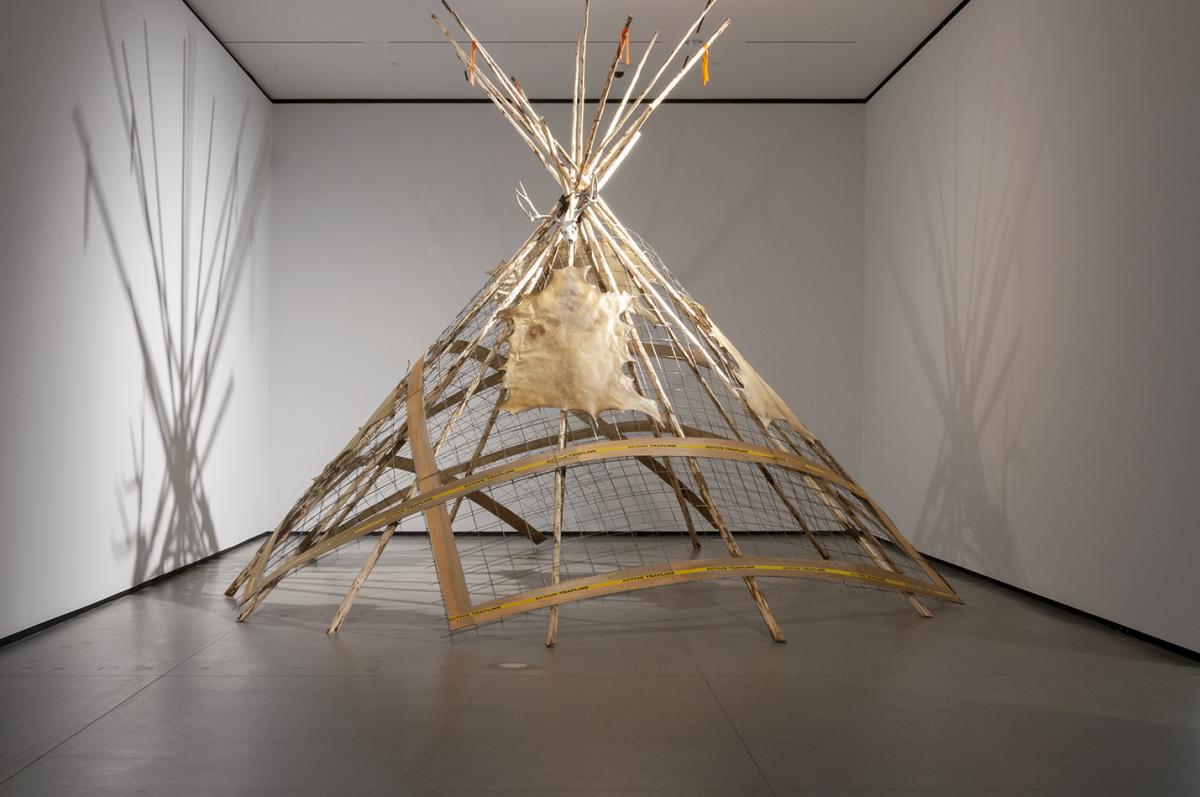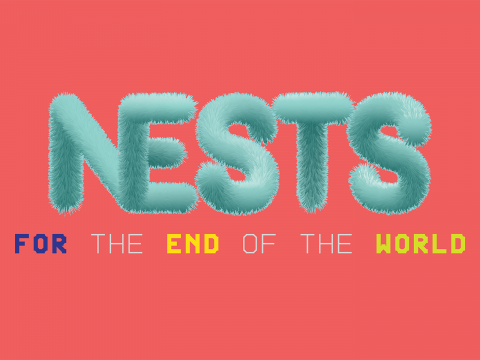Artist Statement:
"WAPIMISOW: Trickster Builds A Nest for the End of the World is an introspective creation that foregrounds Indigenous peoples’ capacities to adopt and transform through anthropogenic change. The Trickster, offering a wry opening between the space of existence and extinction, and of adaptation and survival, reminds us that Indigenous conceptions of the future often present striking contrasts between conflicting histories and worldviews.
For Indigenous peoples, our place in the Anthropocene epoch, the colonial, capitalist and extractive landscape, is not the product of ‘humanity’, but rather has become a particular segment of it—a binary of sorts, the urgency of agency. As a catalyst for psychological change before complete transformation, Trickster offers an opportunity for new associations to be formed and disparate emotions to be joined, making it possible to engage and re-approach the world differently. As contemporary art and architecture continues to remind us of the atrocities experienced by Indigenous peoples, Chakabush, the Cree Trickster, further contemplates a way out of our unpleasant state by practicing one's Wapimisow."1
For this exhibition, Chakasim constructed the traditionally Indigenous form of WAPIMISOW using gathered material from construction, industrial and urban sites around the city. This work references the Indigenous philosophy that the past and future are irrevocably connected and in order to find ways to survive and thrive in the future, we must look at the past. To create a nest for the end of the world, Chakasim looked to an enduring architectural form with thousands of years of history, and constructed it from found objects -- refuse from the present. The tipi is also designed for a nomadic lifestyle. A functional, moveable home, it also carries cultural knowledge from place to place. It is significant that this tipi is made from objects found in Edmonton, demonstrating that the form can be transported from place to place and be rebuilt anywhere from materials available.
1The cultural term WAPIMISOW is a Cree term used to describe the ability to see a reflection of oneself physically, mentally and/or in a premeditated form.
Nests for the End of the World is presented as part of the Poole Centre of Design.














